It's often said that the United States has a short history, only a little over two hundred years since the thirteen North American colonies gained independence in 1776. In fact, Russia's statehood is also relatively short: the city-state of the Grand Duchy of Moscow was established in 1283, a period of over seven hundred years; and it gained independence from Mongol rule in 1480, a period of over five hundred years.
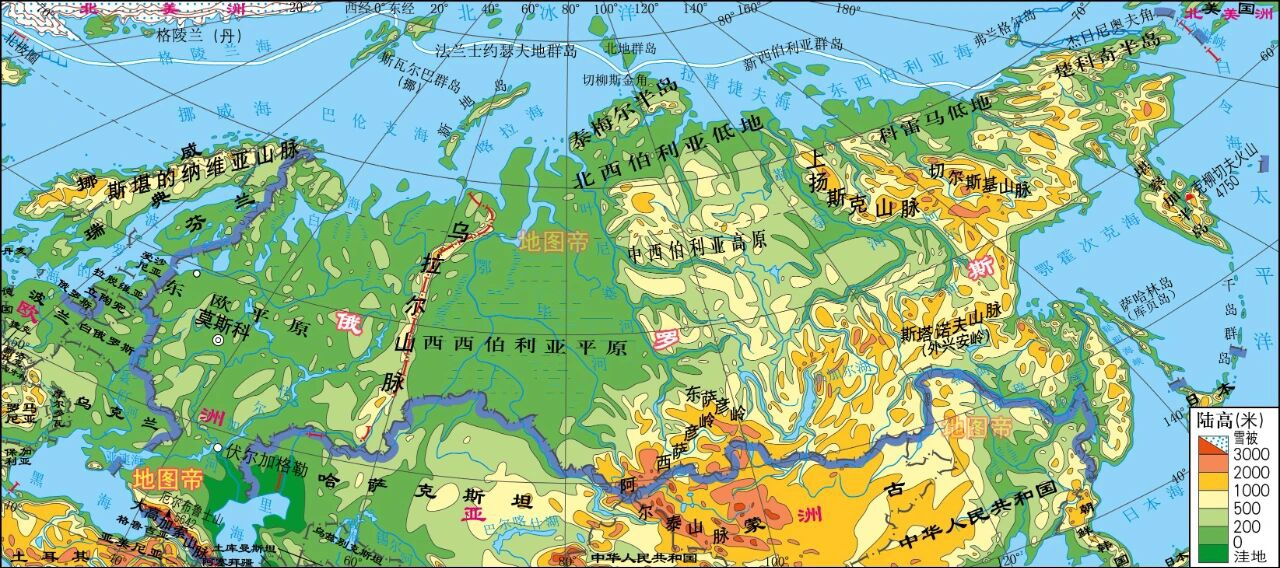
Let's look at the evolution of the name Russia: Grand Duchy of Moscow, Russian Empire, Soviet Russia, Soviet Union, Russia.
Grand Duchy of Moscow
In 1283 (the 20th year of the Yuan Dynasty's Zhiyuan era), the Grand Duchy of Vladimir, which had been established by Kievan Rus', further subdivided into the Grand Duchy of Moscow. At that time, Moscow was merely a small border town of the Novgorod Principality, a city-state dependent on its suzerain state. This is analogous to the Western Zhou Dynasty's enfeoffment of the state of Lu, which in turn subdivided into several princes, including the Three Huan families who nearly destroyed the state. There were many Grand Duchesses of Kievan Rus', and the Grand Duchy of Vladimir alone subdivided into numerous smaller states.

In 1328 (the fifth year of Emperor Taiding of Yuan, or the first year of Zhihe, or the first year of Emperor Tianshun, or the first year of Emperor Wenzong of Yuan), the Mongols conferred upon Ivan I the title of "Grand Prince Vladimir". The Grand Duchy of Moscow acted as the agent of the Golden Horde in collecting tribute from all of Rus'. Its sphere of influence continued to expand, but it was still a vassal state dependent on its suzerain state.
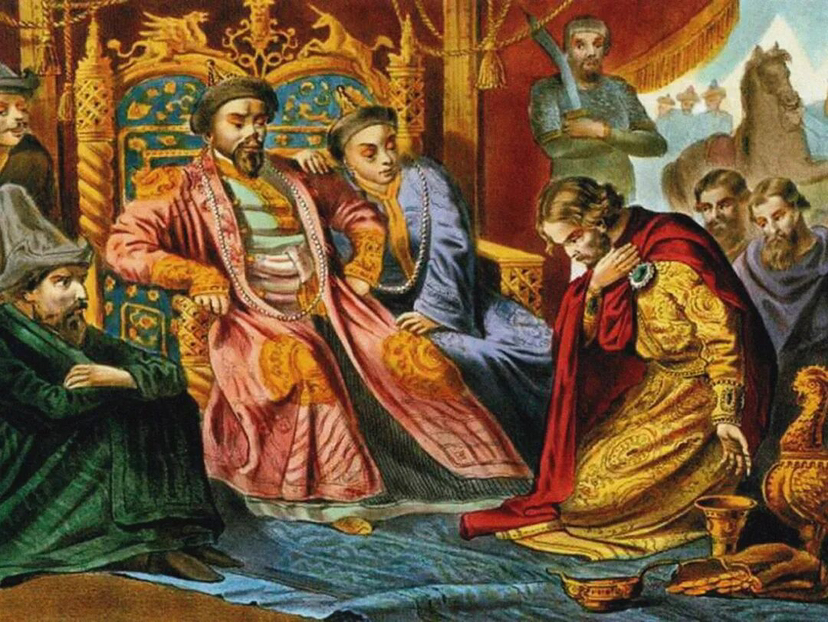
Prince Alexander Nevsky begs for mercy from Batu Khan.
In 1480 (the sixteenth year of the Chenghua reign of Emperor Xianzong of Ming), Khan Ahmad of the Golden Horde launched an attack on the Grand Duchy of Moscow. However, due to the betrayal of his ally, the Grand Duke of Lithuania, the attack ended in failure, and the Grand Duchy of Moscow gained independence, freeing itself from Mongol rule.
The Russian Empire
The Russian Empire, also known as Tsarist Russia or Tsarist Russia, lasted from 1721 to 1917, with its capital in St. Petersburg, except for a few years from 1728 to 1730 when it was temporarily based in Moscow.
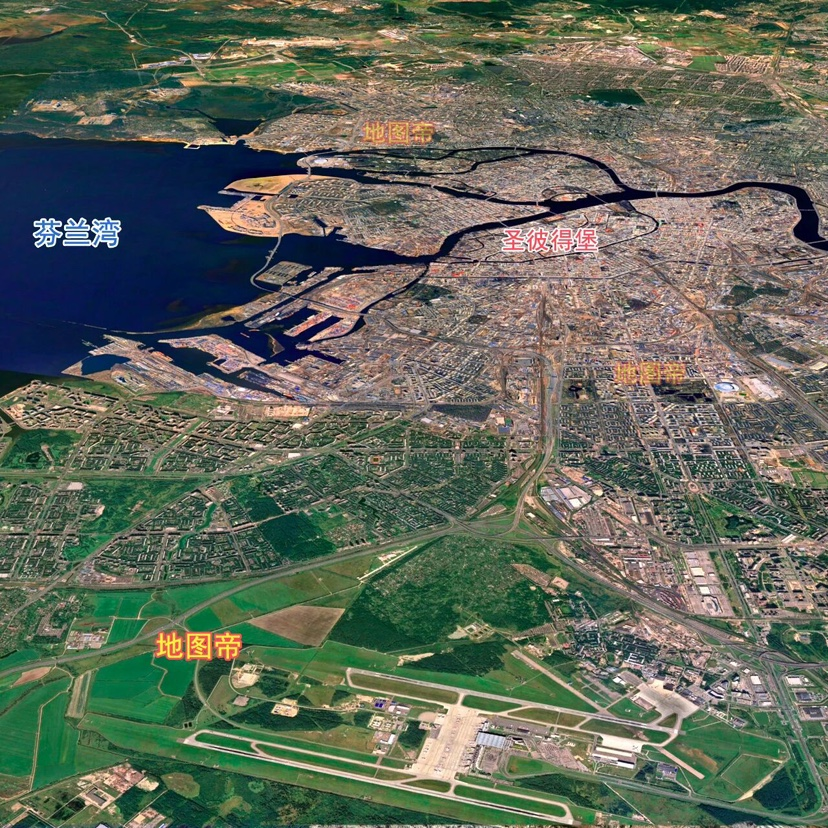
In 1547 (the 26th year of the reign of Emperor Jiajing of the Ming Dynasty), Ivan IV (Ivan the Terrible) changed his title from Grand Duke to Tsar.
In 1721 (the 60th year of the reign of Emperor Kangxi of the Qing Dynasty), Peter I (Peter the Great) changed the country's name to the Russian Empire.
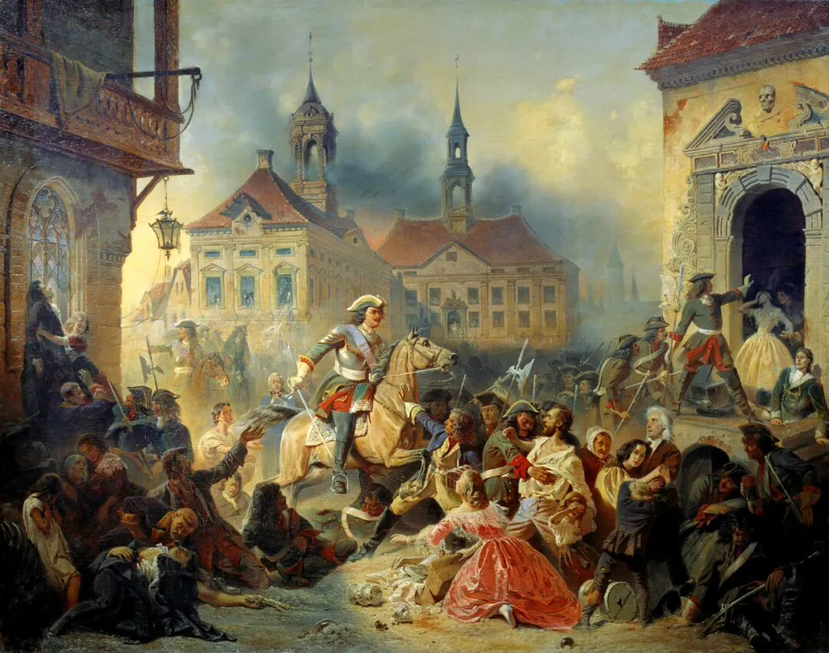
From the 15th to the 18th centuries, the Grand Duchy of Moscow and Tsarist Russia successively annexed the Kazan Khanate, the Astrakhan Khanate, the Siberian Khanate, the Crimean Khanate, and other Mongol-affiliated khanates. The Russians pushed their way to the Chukchi Peninsula and even into the Heilongjiang River basin. If it weren't for the Qing Dynasty as a roadblock, they might have swallowed up the Mongolian Plateau as well.
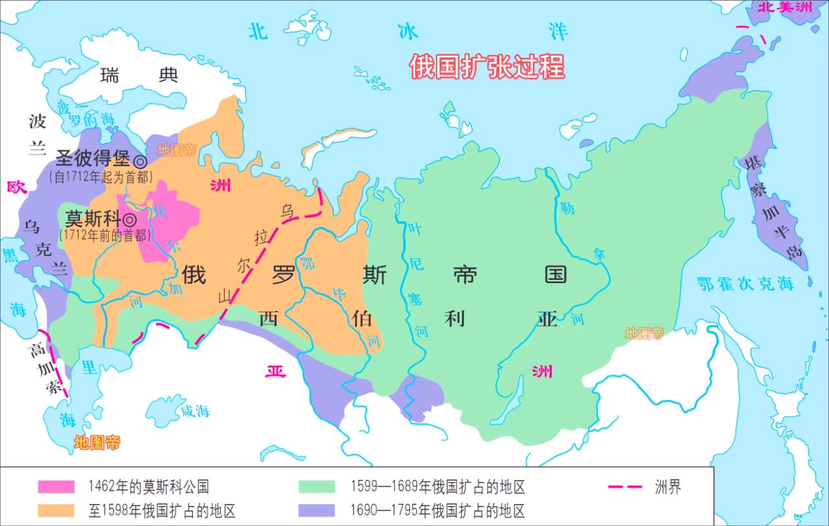
Much of the territory now belonging to Russia was conquered during the Tsarist era. On the western front, Tsarist Russia and Prussia partitioned Poland; on the southern front, they occupied the Crimean Peninsula and crossed the Caucasus Mountains; in the southeast, they gradually controlled Central Asia; and on the eastern front, they fought wars with the Qing Dynasty and Japan, occupying large swathes of land in Northeast Asia.
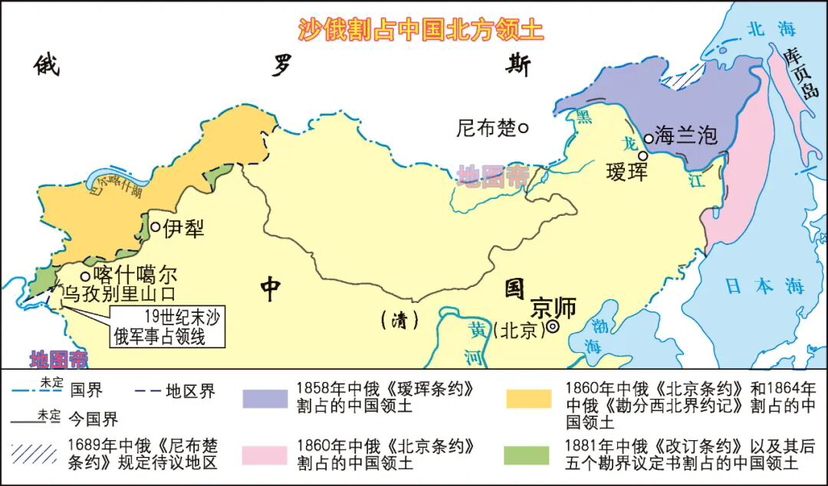
The Russian Empire and the Qing Dynasty successively signed unequal treaties such as the Treaty of Aigun, the Treaty of Beijing, the Treaty of Tarbagatai, and the Revised Treaty, seizing large tracts of territory from the northeast and northwest of the Qing Dynasty.
In 1916, the Russian Empire covered approximately 22.8 million square kilometers. Its territory included present-day Russia, Ukraine, Belarus, Moldova, the three Caucasus countries, the five Central Asian republics, the three Baltic states, and Finland.

Soviet Russia
Soviet Russia, or Soviet Russia for short, lasted from 1917 to 1922, during which its capital was moved from St. Petersburg to Moscow.

In 1917, during World War I, the February Revolution broke out in Tsarist Russia, and Nicholas II became the last Tsar, replacing the Russian Empire with Soviet Russia.
After World War I, Britain, France, Japan, Poland, the United States and other countries were dissatisfied with the Soviet Union's unilateral withdrawal from the war against Germany and the issue of Tsarist Russia's debts, and carried out armed intervention against the Soviet Union.
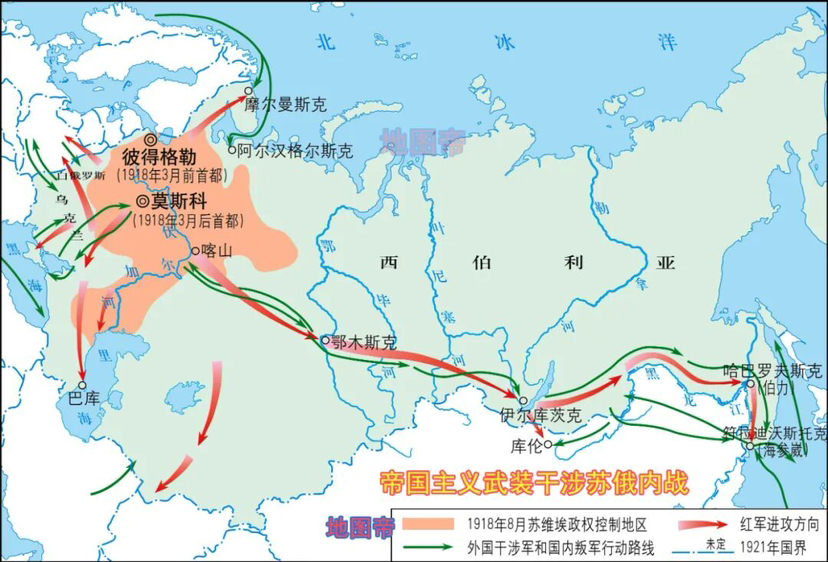
Soviet Russia defeated the foreign forces and stabilized internally, but it paid a price, losing the Baltic states and Finland.
In 1922, Soviet Russia covered an area of approximately 22.05 million square kilometers, encompassing present-day Russia, Ukraine, Belarus, Moldova, the three Caucasus countries, and the five Central Asian republics.
[Soviet Union]
In 1922, the Russian Federation, the Transcaucasian Federation, Ukraine, and Belarus formed the Soviet Union, which later expanded to 15 constituent republics, including the Baltic states, spanning from 1922 to 1991.

After World War II, the Soviet Union acquired northern East Prussia (Kaliningrad, Russia) from Germany, and its western territory advanced more than 200 kilometers toward Poland (mainly distributed in present-day Belarus and Ukraine).
At its peak, the Soviet Union covered an area of approximately 22.4 million square kilometers, encompassing present-day Russia, Ukraine, Belarus, Moldova, the three Caucasus countries, the five Central Asian republics, and the three Baltic states.
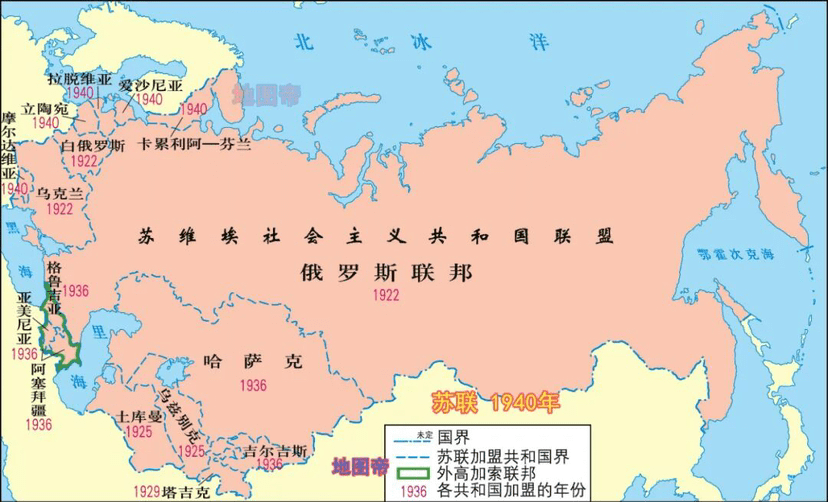 The Soviet Union covered one-sixth of the Earth's land surface, larger than the United States and Canada combined. Its landmass spanned 11 time zones, approximately 10,000 kilometers from east to west, nearly 7,200 kilometers from north to south, with land borders exceeding 20,000 kilometers, bordering 16 countries.
The Soviet Union covered one-sixth of the Earth's land surface, larger than the United States and Canada combined. Its landmass spanned 11 time zones, approximately 10,000 kilometers from east to west, nearly 7,200 kilometers from north to south, with land borders exceeding 20,000 kilometers, bordering 16 countries.
The Soviet Union's economic peak was in 1975, with a GDP approximately 40.6% of that of the United States. However, it gradually fell behind the US, reaching only 12.7% by 1990. This economic weakness was perhaps the biggest reason for the Soviet Union's collapse. Militarily, the Soviet Union and the United States were roughly equal, with the Soviet army being stronger, the navy weaker, and the air forces on par, while the Soviet Union possessed more nuclear warheads than the United States.
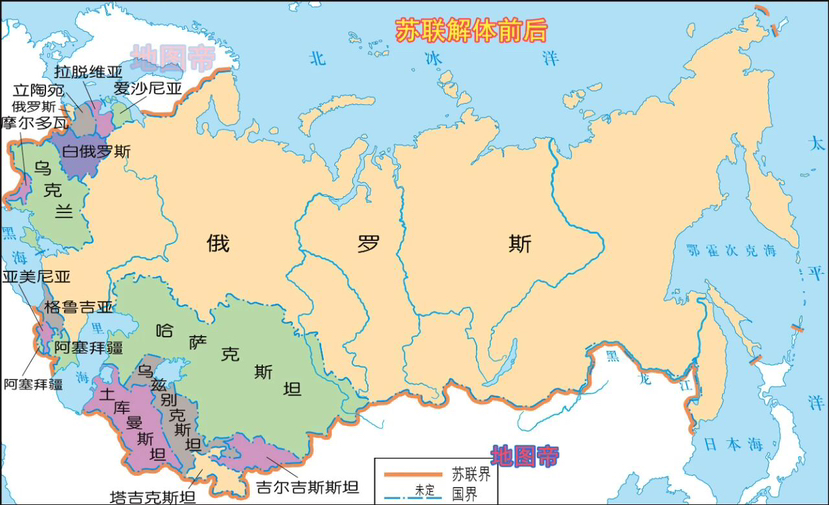 In the early 1990s, the Soviet Union disintegrated into 15 countries, including the three Baltic states: Latvia, Estonia, and Lithuania; the five Central Asian states: Kazakhstan, Uzbekistan, Kyrgyzstan, Tajikistan, and Turkmenistan; the three Transcaucasian states: Azerbaijan, Georgia, and Armenia; the three East Slavic states: Ukraine, Belarus, and Russia; plus Moldova.
In the early 1990s, the Soviet Union disintegrated into 15 countries, including the three Baltic states: Latvia, Estonia, and Lithuania; the five Central Asian states: Kazakhstan, Uzbekistan, Kyrgyzstan, Tajikistan, and Turkmenistan; the three Transcaucasian states: Azerbaijan, Georgia, and Armenia; the three East Slavic states: Ukraine, Belarus, and Russia; plus Moldova.
In 1991, the total population of the 15 countries that dissolved the Soviet Union was 287 million, while the population of the United States was 257 million.
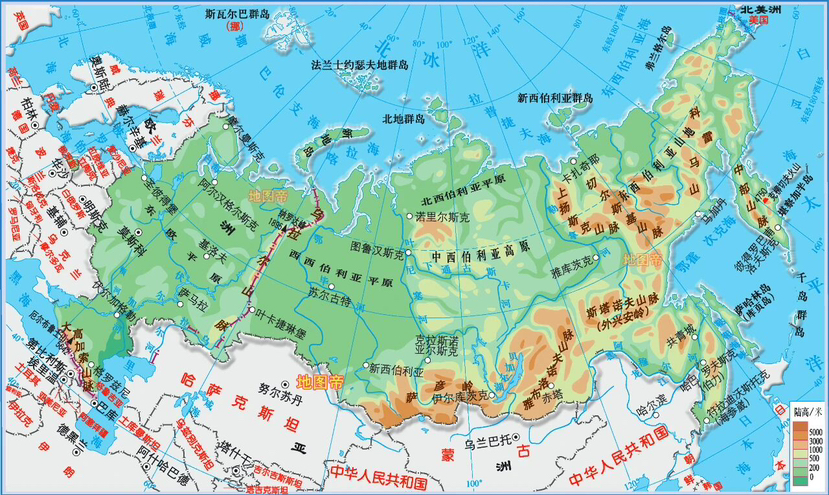 【Russia】
【Russia】
In 1991, the Soviet Union dissolved into 15 republics, with Russia inheriting the Soviet Union's international status and most of its territory.
 Russia has an area of approximately 17,098,200 square kilometers, ranking first in the world. Spanning Eurasia, Russia's European portion covers about 4 million square kilometers, while its Asian portion covers about 13 million square kilometers. Its longest east-west distance is approximately 9,000 kilometers, and its widest north-south distance is approximately 4,000 kilometers.
Russia has an area of approximately 17,098,200 square kilometers, ranking first in the world. Spanning Eurasia, Russia's European portion covers about 4 million square kilometers, while its Asian portion covers about 13 million square kilometers. Its longest east-west distance is approximately 9,000 kilometers, and its widest north-south distance is approximately 4,000 kilometers.
Russia has a population of 146 million (2024), with Russians comprising 77.7%. Major minority groups include Tatars, Ukrainians, Bashkirs, Chuvash, Chechens, Armenians, Avars, Moldovars, Kazakhs, Azerbaijanis, and Belarusians. The official language is Russian. The majority of the population adheres to the Orthodox Christian faith, followed by Islam.
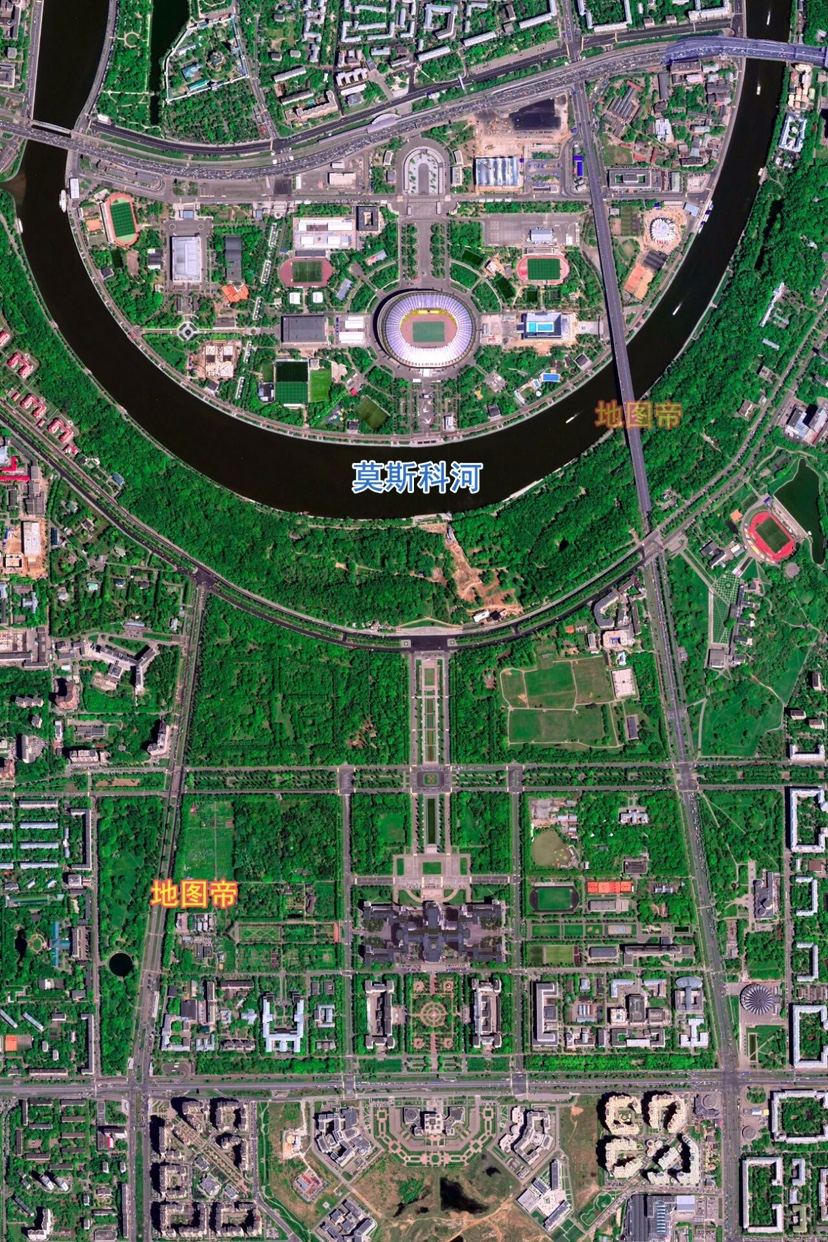 Moscow, the capital of Russia, is located on the East European Plain, in the Central Russian Highlands between the Oka and Volga rivers. Its city center is at latitude 55°45′21″N. Moscow covers an area of approximately 2,560 square kilometers, smaller than Beijing's 16,800 square kilometers. However, Moscow has a resident population of about 12.3 million, accounting for approximately 8.42% of Russia's total population of 146 million. While Beijing is also a major metropolis, it only accounts for about 1.55% of the national population. Moscow's population and economic significance in Russia are roughly equivalent to the combined population and economic weight of Beijing, Shanghai, Guangzhou, and Shenzhen in China.
Moscow, the capital of Russia, is located on the East European Plain, in the Central Russian Highlands between the Oka and Volga rivers. Its city center is at latitude 55°45′21″N. Moscow covers an area of approximately 2,560 square kilometers, smaller than Beijing's 16,800 square kilometers. However, Moscow has a resident population of about 12.3 million, accounting for approximately 8.42% of Russia's total population of 146 million. While Beijing is also a major metropolis, it only accounts for about 1.55% of the national population. Moscow's population and economic significance in Russia are roughly equivalent to the combined population and economic weight of Beijing, Shanghai, Guangzhou, and Shenzhen in China.
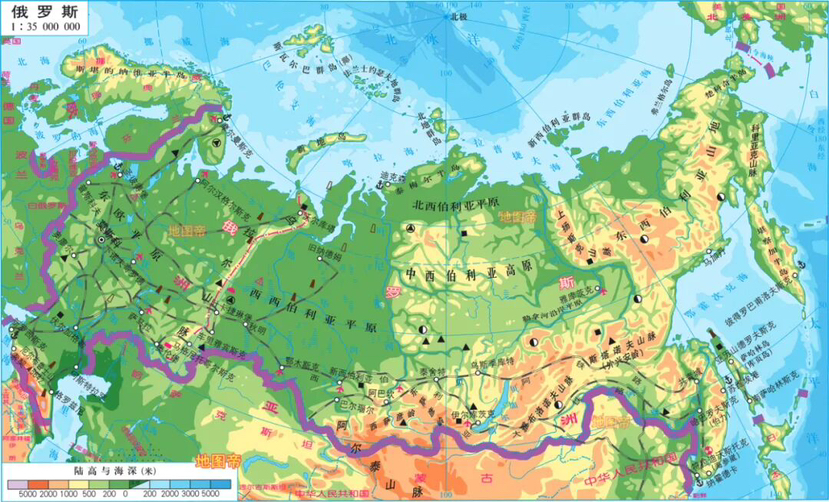 Overall, Russia has a much lower population density than China, but Moscow is very crowded. It is a country with an uneven population distribution and a high concentration in large cities.
Overall, Russia has a much lower population density than China, but Moscow is very crowded. It is a country with an uneven population distribution and a high concentration in large cities.
